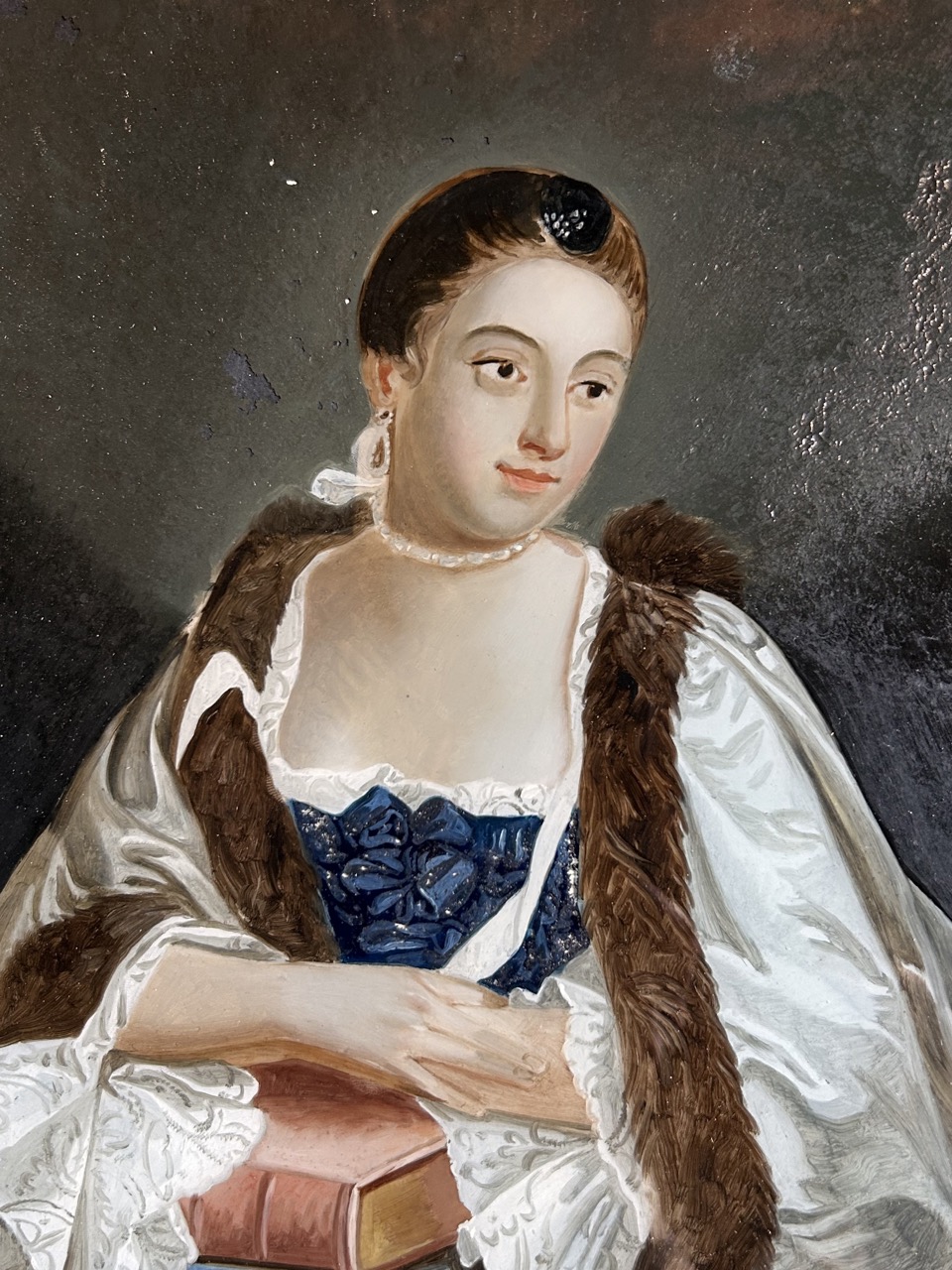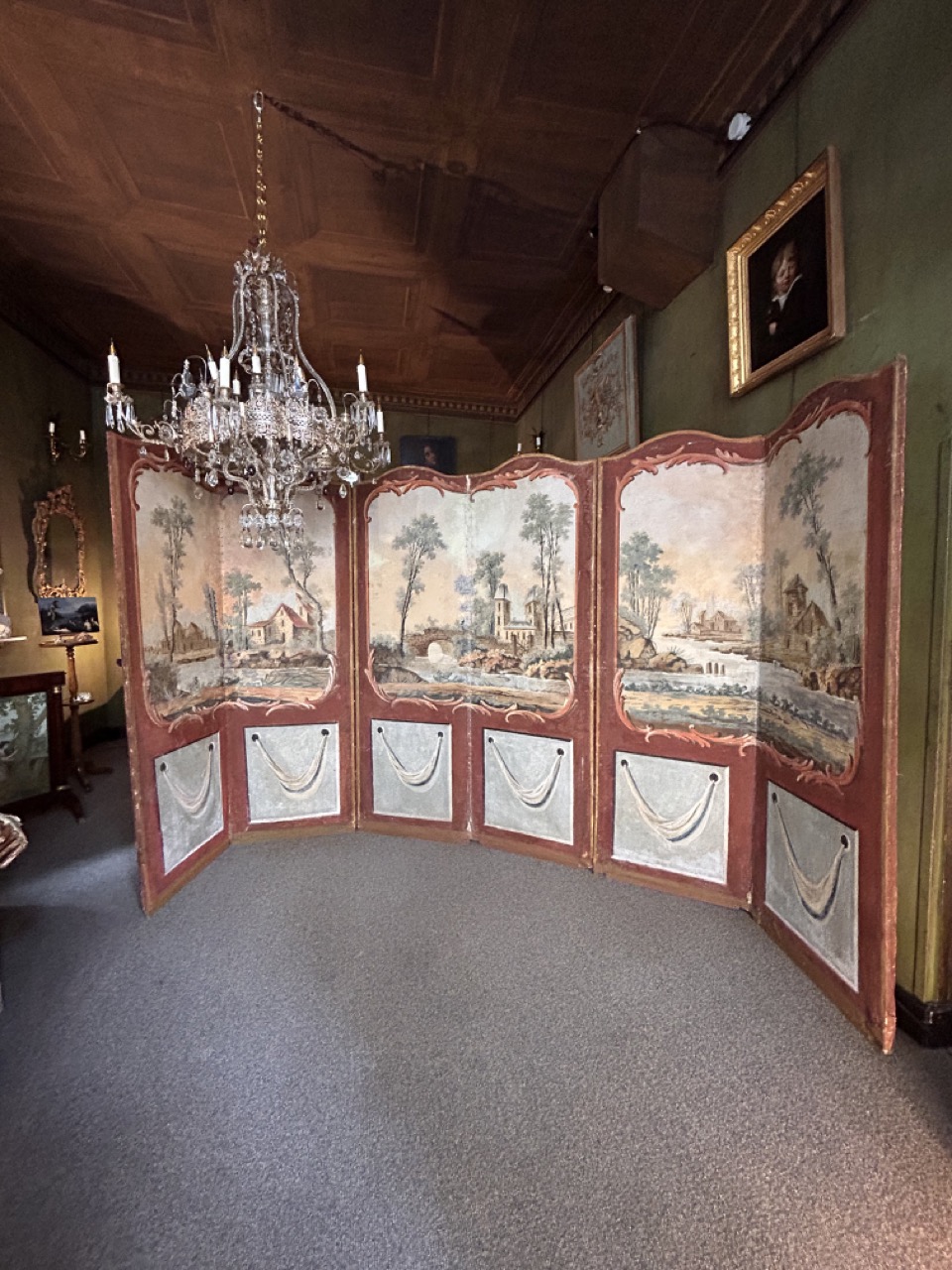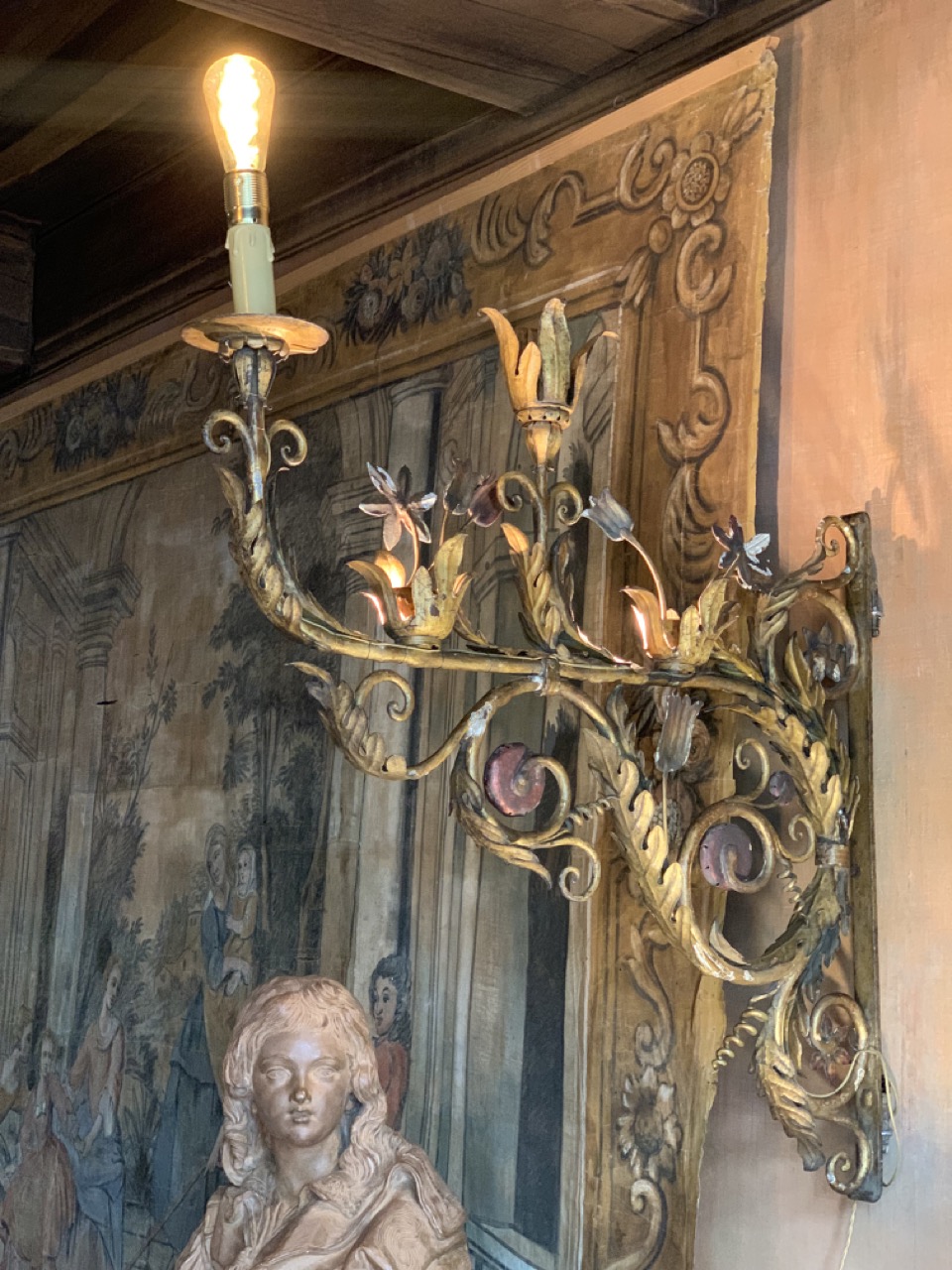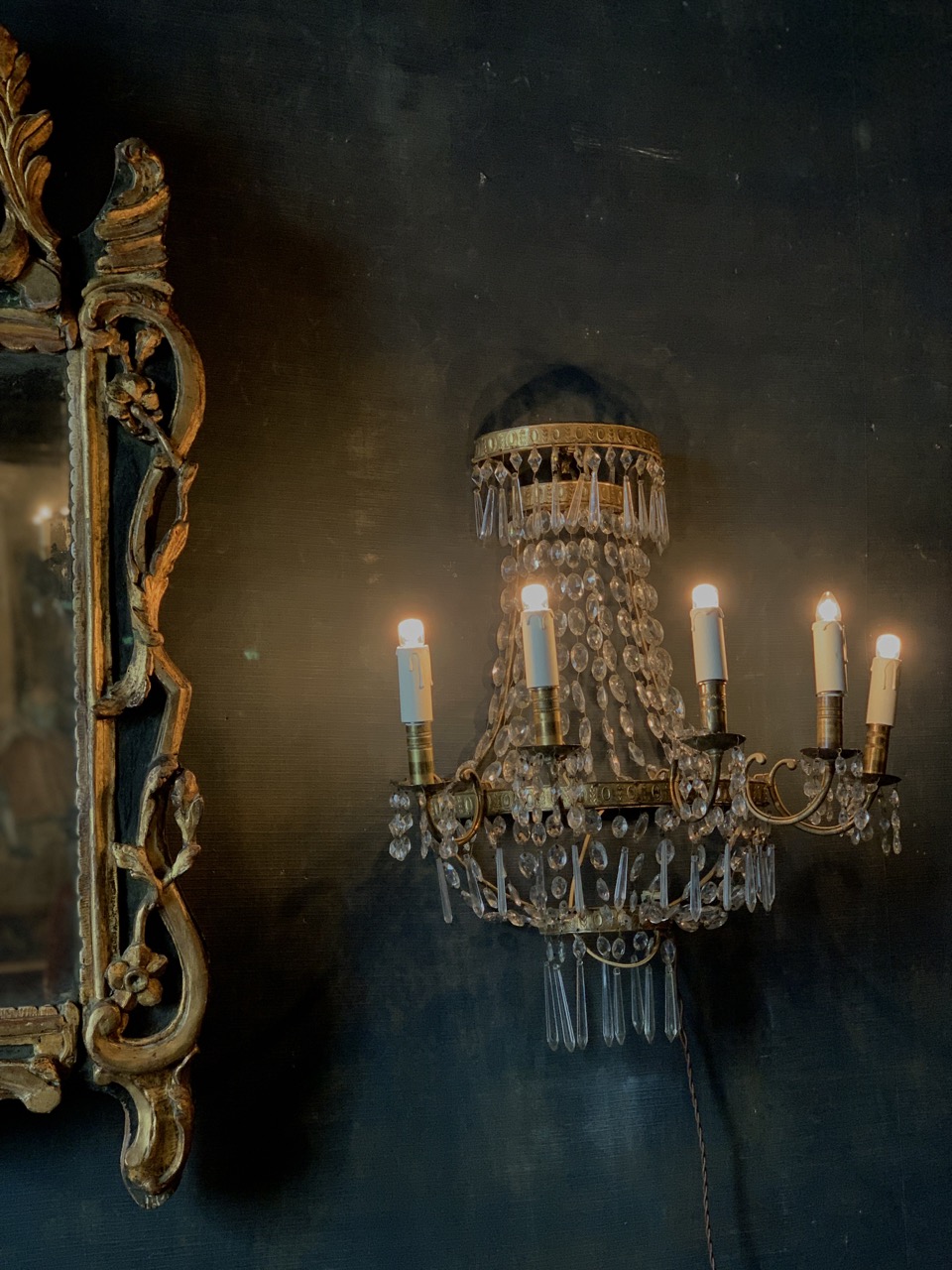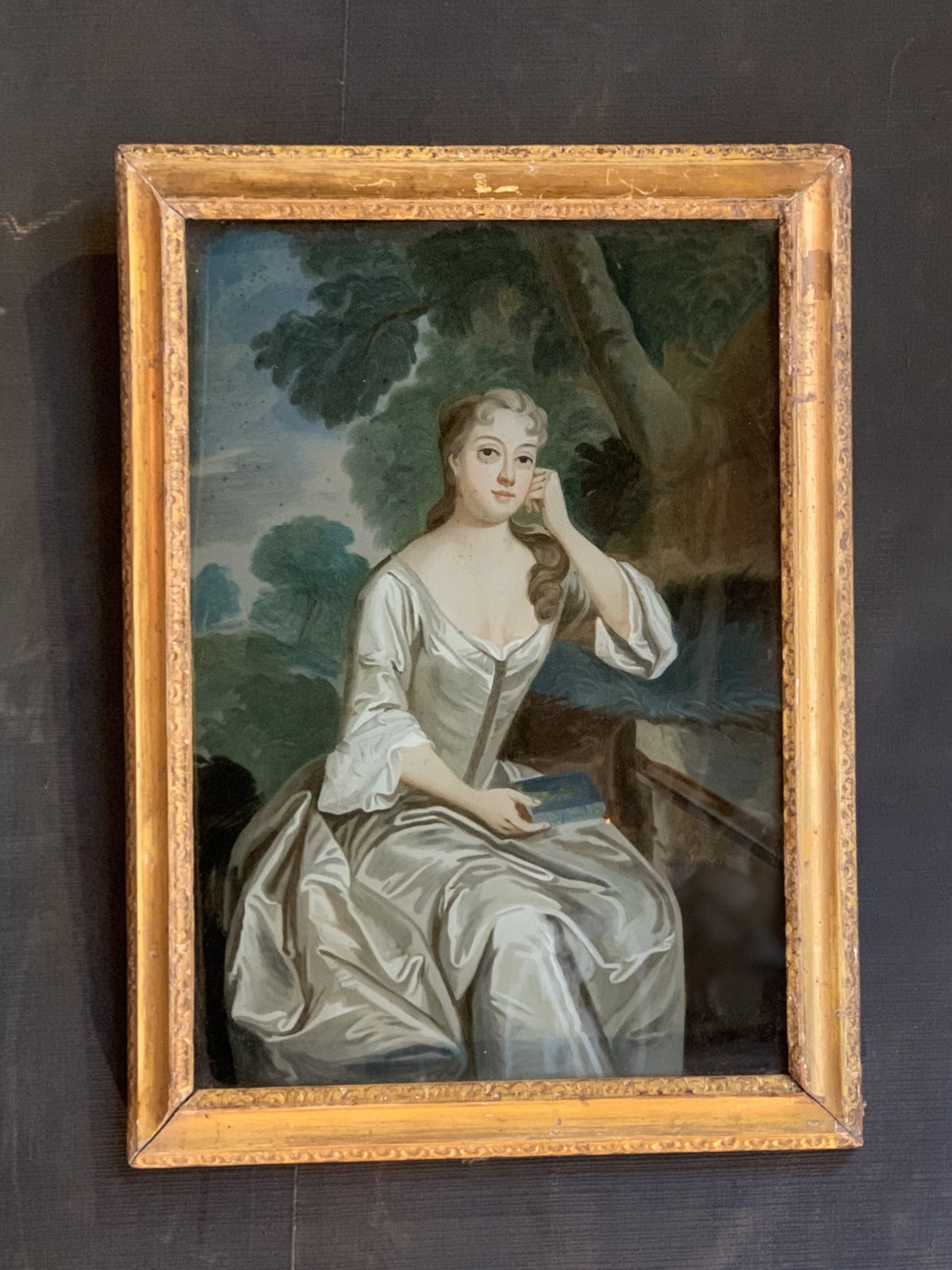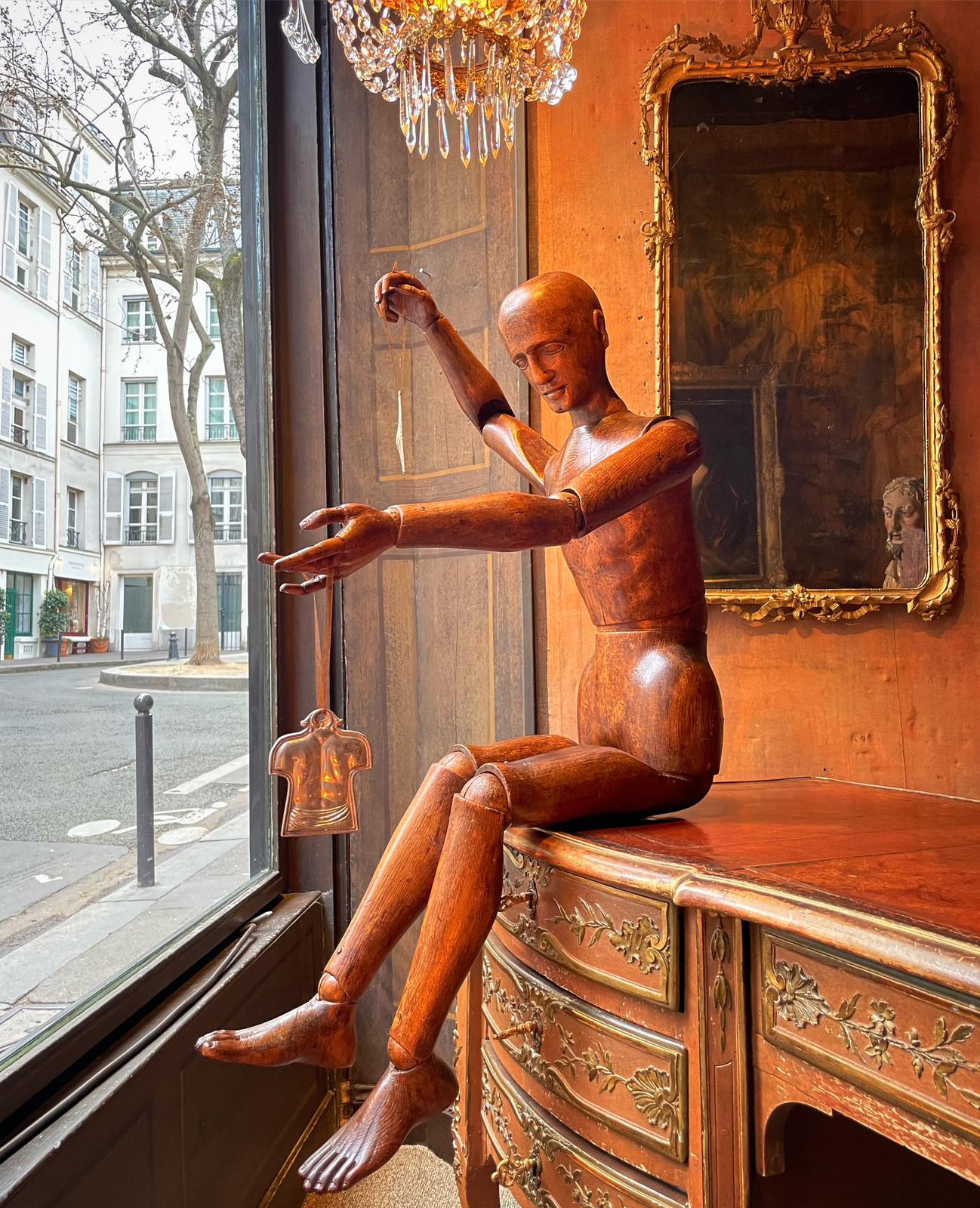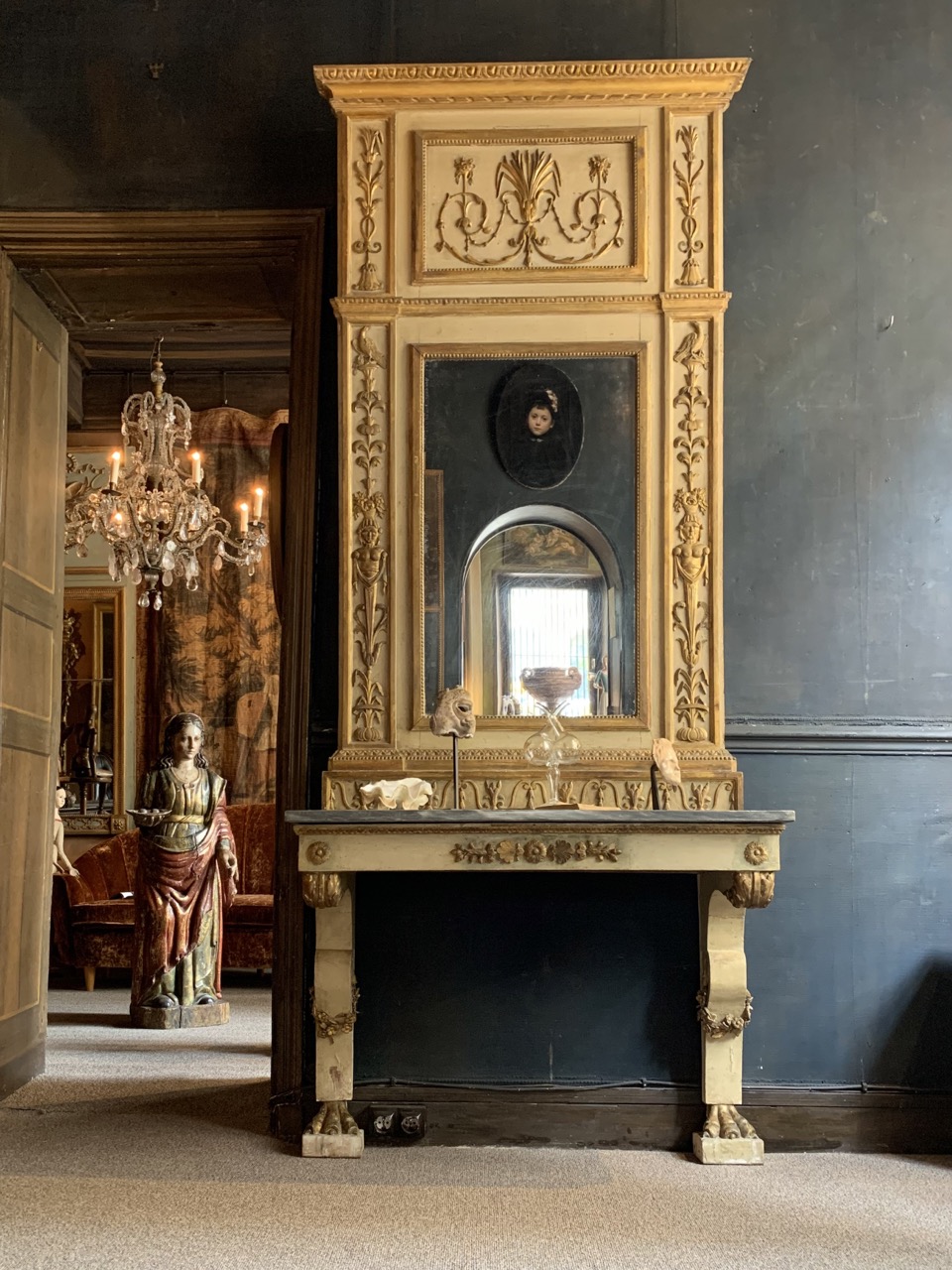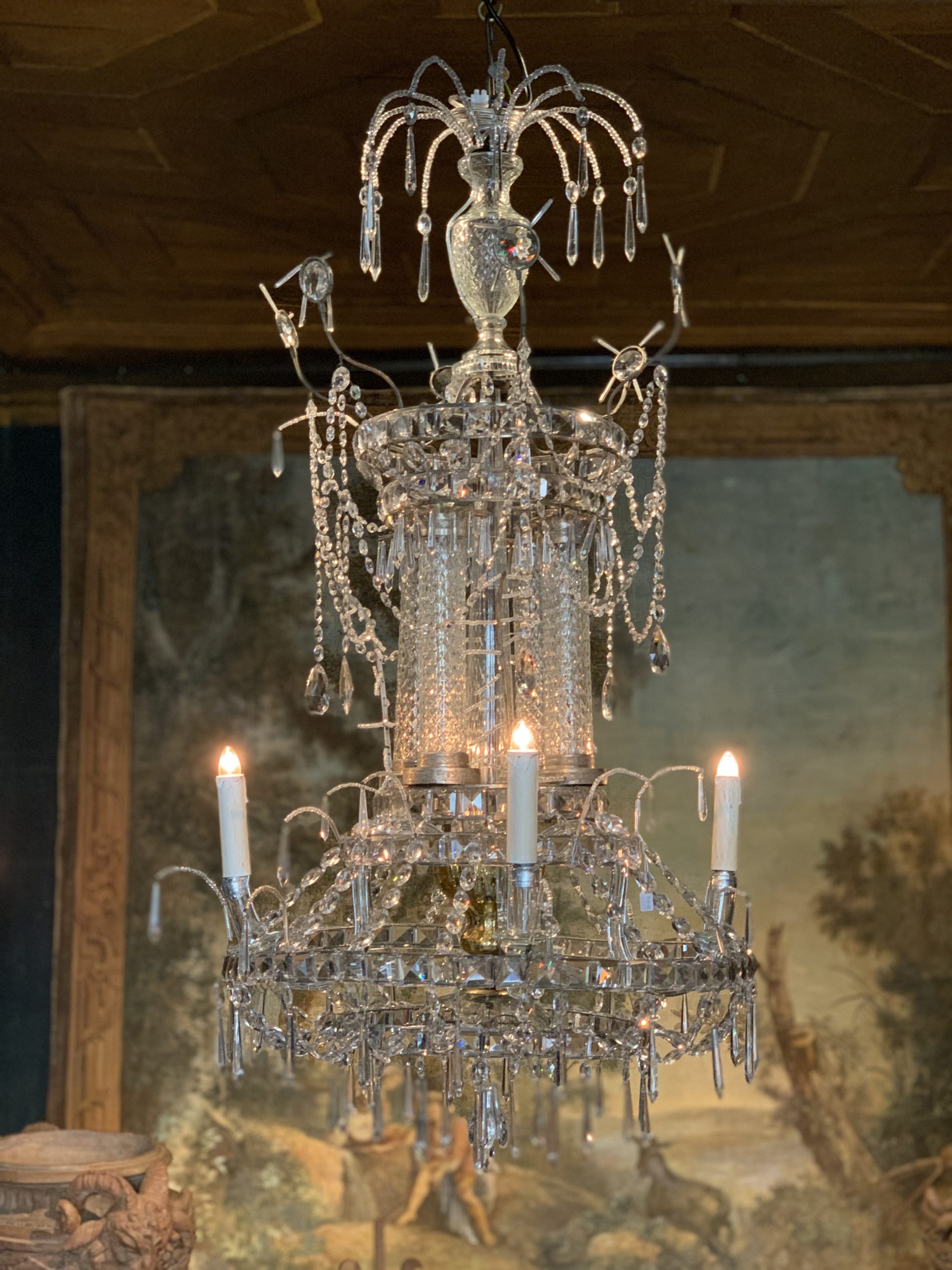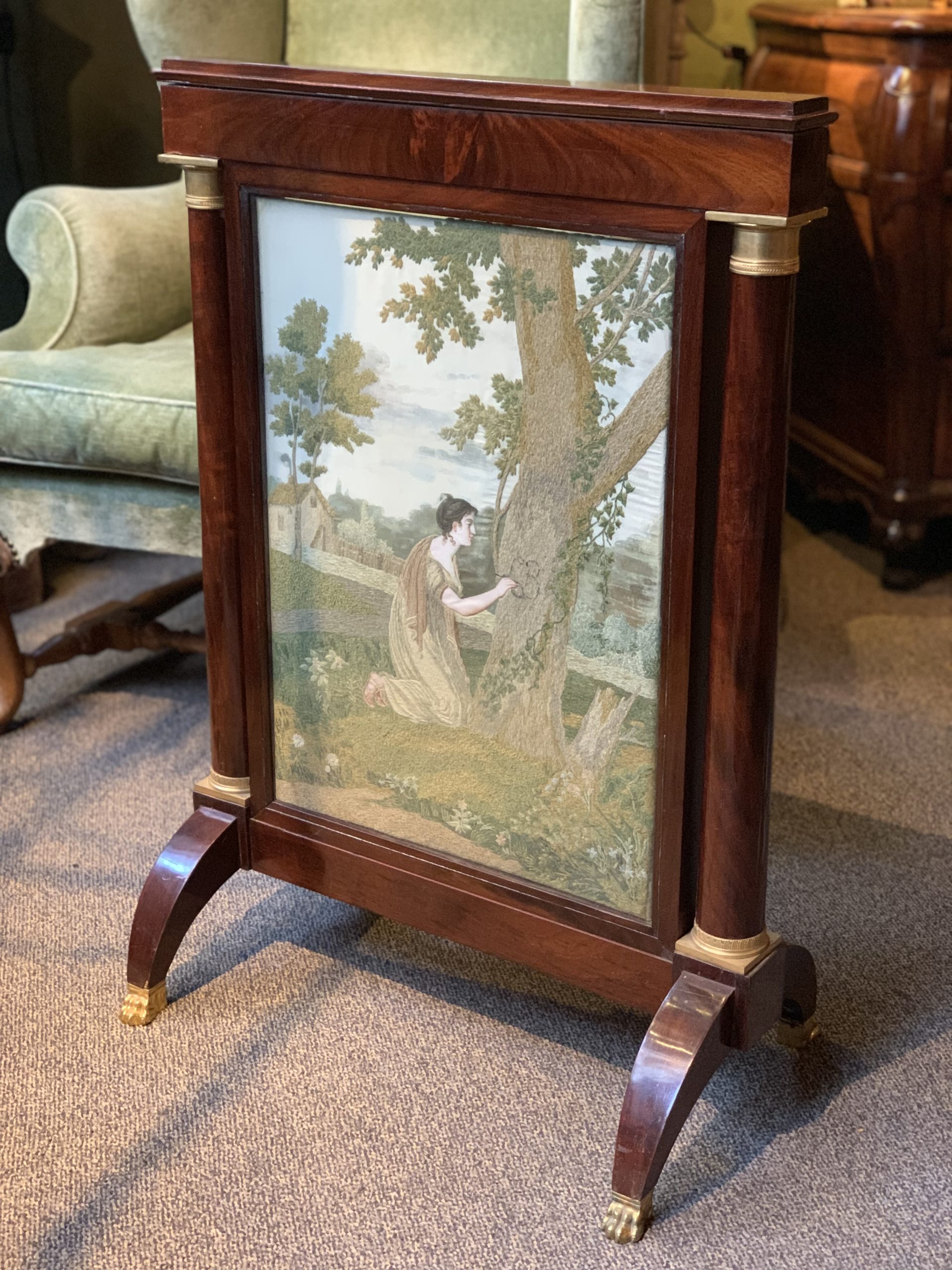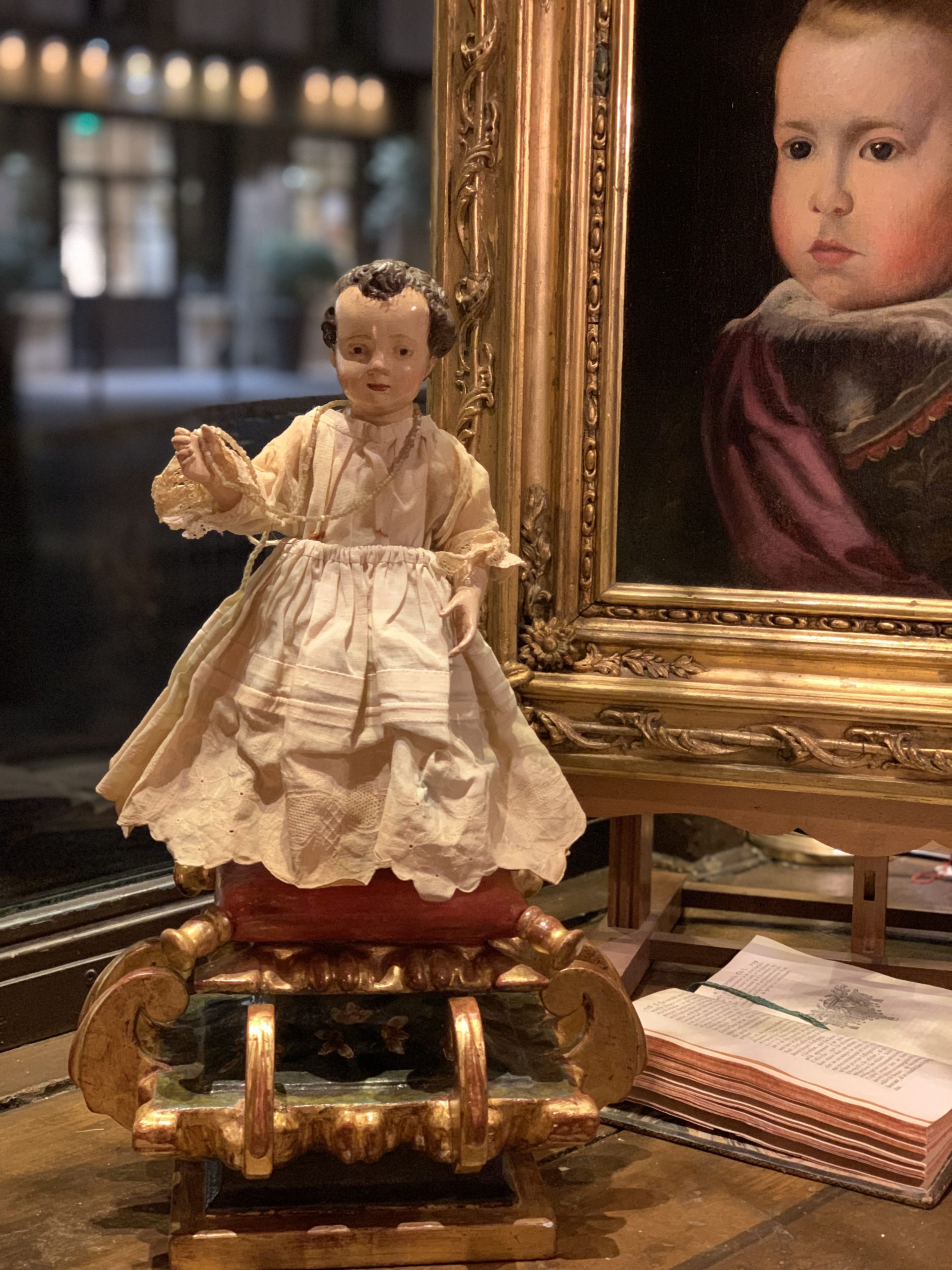Painting under glass is a difficult artistic technique that is executed directly on a sheet of glass. The glass supports the paint like a canvas. Thus the glass serves both as a support and as a protective varnish. It is a “cold” painting technique so the process does not require baking. The pigment is bound to the glass by an oily vehicle most often based on varnish.
Magnificent screen in painted canvas, mounted with six leaves, with a total length of 384 cm deployed.
Pair of polychrome wrought iron sconces.
18th century
Italy
The pair of neoclassical wall lights,
chiseled gilded bronze structure with crystal pendants.
XIX century
Italy
Painting under glass is a difficult artistic technique that is executed directly on a sheet of glass.
The glass supports the paint like a canvas. Thus the glass serves both as a support and as a protective varnish. It is a “cold” painting technique so the process does not require baking.
“Pure Greek beauty, supple and dignified (…) who gazes with calm indifference at the crowds who gaze at him speechless.”
Set consisting of a console and mirror, richly decorated with the characteristic motifs of the neoclassical style, with garlands, stylized acanthus leaves and female busts.
Fountain shape chandelier composed of 4 lights, beads and pendants in cut crystal.
Italy
19th century
Silk painted and embroidered double-sided firewall, structure composed of two columns, base ends in lion’s feet.
Directoire period, circa 1800
France
“Triumphant Child Jesus” round polychrome lead sculpture, polychrome carved wooden base.
17th century,
Andalusia, Spain

